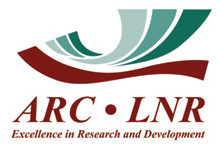
ARC-Grain Crops, Potchefstroom
 Dr Belinda Janse
Dr Belinda Janse van Rensburg,
ARC-Grain Crops, Potchefstroom
 Dr Bradley Flett,
Dr Bradley Flett, ARC-Grain Crops, Potchefstroom
Agricultural losses brought on by plant diseases caused by fungi, bacteria and viruses, have been an international and continuing problem in agriculture. Producers frequently deal with various diseases on crops, as well as new pathogenic strains that may develop which may be fungicide-resistant or be able to overcome host resistance in the same crop or field. Therefore, early and accurate disease detection or diagnosis are critical to disease prevention in order to limit damage in agricultural crops during growth, harvest, and post-harvest processing, as well as to maximise productivity and assure agricultural sustainability.
Why accurate plant disease identification is important
Plant diseases brought on by endemic, re-emerging and emerging epidemics of pathogens result in significant economic loss for plant systems, low productivity and a threat to food security. The world is concerned about food safety and security as well as nutritional security since the significant rise in human population necessitates an improvement in agricultural production. Therefore, accurate diagnosis of plant diseases is crucial in the current era of reducing crop losses. Without proper identification, disease control efforts can be a waste of time and money if an incorrect approach is taken. If plant diseases are correctly diagnosed and discovered early enough, appropriate control measures can be implemented to control pathogens that cause disease.
Diagnostic methods for plant diseases
Accurate, sensitive and precise diagnosis is required for the management of plant diseases to be effective and affordable. Visual identification alone has issues: Some disease symptoms are similar and are frequently confused with one another, which can result in misdiagnosis and have a negative impact on control measures. An example of this is bacterial leaf streak, which to the untrained eye may look like grey leaf spot (a fungal disease) and/or sunburn damage. In this case a bactericide will have no effect on a fungal disease and a fungicide will have no effect on a bacterial disease. Neither a fungicide nor bactericide will have an effect on sunburn (abiotic) and the producer will spend money on a product that is not pathogen-specific while the misdiagnosed disease continues to spread.
Traditional plating out techniques (Photo 1) and microscopic identification of plant diseases have given way to high-throughput serological techniques like enzyme-linked immunosorbent assay (ELISA) and molecular techniques such as polymerase chain reaction (PCR) (Figure 1) in the field of plant disease diagnostics. Plating-out techniques are time-consuming, produce a lot of environmental waste and require microscopical expertise. Even then, some species cannot be distinguished from each other. Molecular techniques are faster and more accurate. Specific and sensitive detection of phytopathogens is required for efficient and effective plant disease management.



Culture-based methods
In the past, most methods for diagnosing bacteria and fungi have relied on morphological methods based on culture. This entails plating out the sample on a particular growth medium and waiting for the potential pathogens to grow under controlled conditions; this process can take days or even weeks and can be considerably more challenging in the case of biotrophic pathogens. In addition, when identifying a disease pathogen morphologically, taxonomy skills or knowledge are also required.
Molecular methods
A number of molecular approaches have been employed to identify pathogens in a more accurate, focussed and quick manner in an effort to speed up and reduce the time-consuming culture-based technique. They include conventional polymerase chain reaction (PCR), real-time PCR, reverse transcription (RT)-PCR, PCR-ELISA, nested PCR, multiplex PCR and isothermal PCR, which are all PCR-based techniques. PCR is an in vitro, primer-directed (identifying specific sequences within a pathogen genome, all of which differ according to species or race), enzymatic reaction capable of exponential amplification of DNA. PCR-based assays are specific, sensitive, efficient, rapid, versatile and relatively economical. These methods are ideal for detection of pathogens de novo because they do not require isolation of the pathogen in pure culture, thus saving time and resources. PCR has the added advantage in that the pathogens can be identified and quantified and the results can be compared with the effect of different treatments.
Immunological techniques
Serological detection of plant pathogens involves identification of disease based on antibodies supported by colour change in the assay (this is similar to ELISA testing used to diagnose HIV infection, pregnancy tests and blood typing). Each antibody is specific to a particular antigen and will bind to it. ELISA – which was earlier developed for detecting viruses, but today can be used to detect and quantify a vast array of plant pathogens – is the most commonly used serological method. The accuracy of ELISA has been greatly improved by commercially available recombinant antibodies which make the diagnosis practically reliable. However, their costs are usually higher than PCR-based technologies and the shelf life of kits based on immunological techniques is limited.
How to proceed if unsure of the diagnosis
Producers who are unsure of any disease diagnosis made in their grain field crops can send samples to the authors at the ARC-Grain Crops’ plant pathology section in Potchefstroom. Pathogen identification in the field can be quite challenging and requires specialised equipment, protocols and training for an accurate diagnosis. The ARC-Grain Crops in Potchefstroom has a well-equipped laboratory and experienced plant pathologists to perform these assays. Producers who are unsure of a disease diagnosis should contact them for support.
Producers are welcome to contact Dr Henry Njom at njomh@arc.agric.za or 018 299 6225; Dr Belinda Janse van Rensburg at BelindaJ@arc.agric.za or 018 299 6357 or Dr Bradley Flett at FlettB@arc.agric.za or 018 299 6362 with any disease enquiries.



























